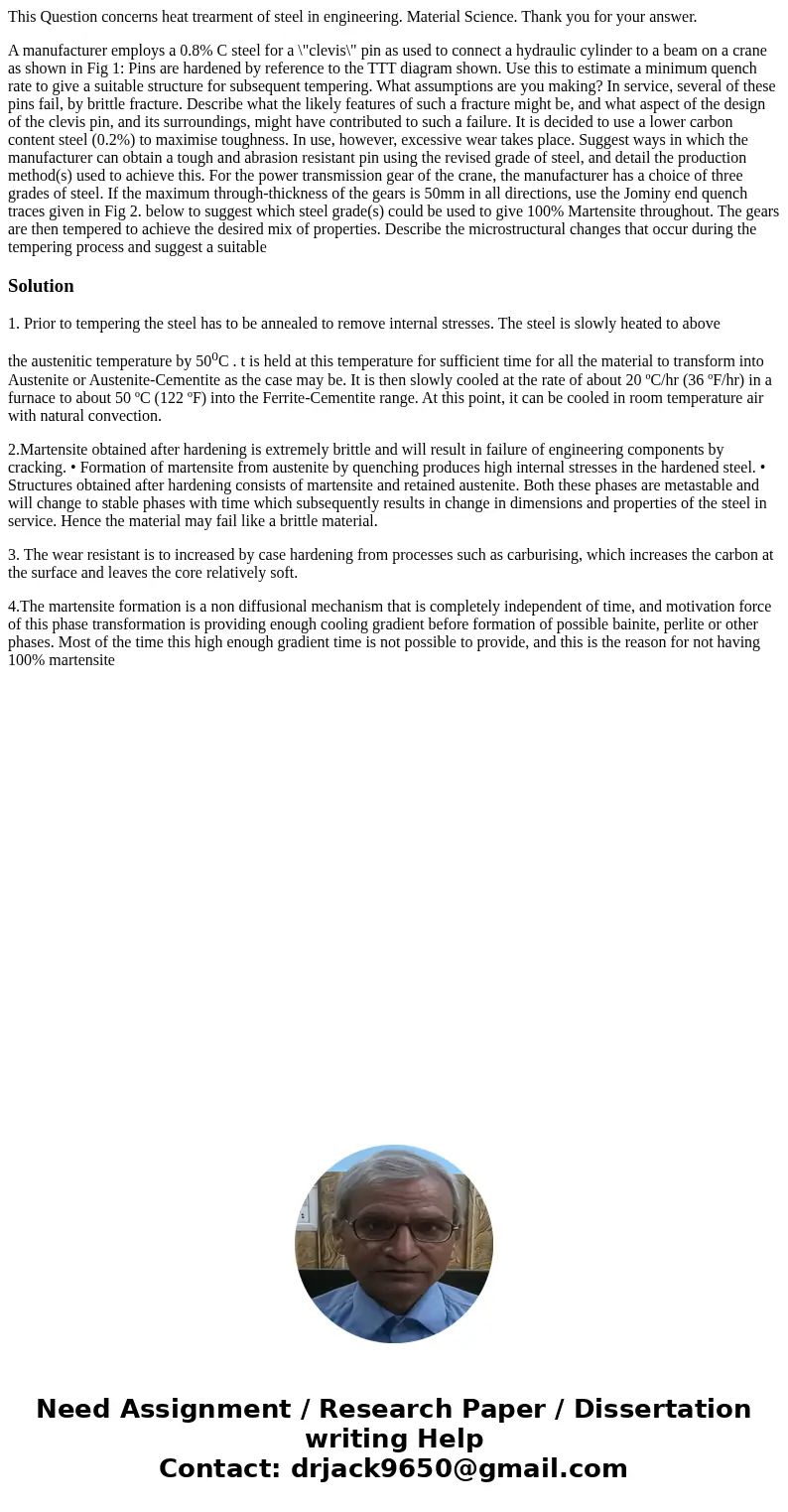This Question concerns heat trearment of steel in engineerin
This Question concerns heat trearment of steel in engineering. Material Science. Thank you for your answer.
A manufacturer employs a 0.8% C steel for a \"clevis\" pin as used to connect a hydraulic cylinder to a beam on a crane as shown in Fig 1: Pins are hardened by reference to the TTT diagram shown. Use this to estimate a minimum quench rate to give a suitable structure for subsequent tempering. What assumptions are you making? In service, several of these pins fail, by brittle fracture. Describe what the likely features of such a fracture might be, and what aspect of the design of the clevis pin, and its surroundings, might have contributed to such a failure. It is decided to use a lower carbon content steel (0.2%) to maximise toughness. In use, however, excessive wear takes place. Suggest ways in which the manufacturer can obtain a tough and abrasion resistant pin using the revised grade of steel, and detail the production method(s) used to achieve this. For the power transmission gear of the crane, the manufacturer has a choice of three grades of steel. If the maximum through-thickness of the gears is 50mm in all directions, use the Jominy end quench traces given in Fig 2. below to suggest which steel grade(s) could be used to give 100% Martensite throughout. The gears are then tempered to achieve the desired mix of properties. Describe the microstructural changes that occur during the tempering process and suggest a suitableSolution
1. Prior to tempering the steel has to be annealed to remove internal stresses. The steel is slowly heated to above
the austenitic temperature by 500C . t is held at this temperature for sufficient time for all the material to transform into Austenite or Austenite-Cementite as the case may be. It is then slowly cooled at the rate of about 20 ºC/hr (36 ºF/hr) in a furnace to about 50 ºC (122 ºF) into the Ferrite-Cementite range. At this point, it can be cooled in room temperature air with natural convection.
2.Martensite obtained after hardening is extremely brittle and will result in failure of engineering components by cracking. • Formation of martensite from austenite by quenching produces high internal stresses in the hardened steel. • Structures obtained after hardening consists of martensite and retained austenite. Both these phases are metastable and will change to stable phases with time which subsequently results in change in dimensions and properties of the steel in service. Hence the material may fail like a brittle material.
3. The wear resistant is to increased by case hardening from processes such as carburising, which increases the carbon at the surface and leaves the core relatively soft.
4.The martensite formation is a non diffusional mechanism that is completely independent of time, and motivation force of this phase transformation is providing enough cooling gradient before formation of possible bainite, perlite or other phases. Most of the time this high enough gradient time is not possible to provide, and this is the reason for not having 100% martensite

 Homework Sourse
Homework Sourse